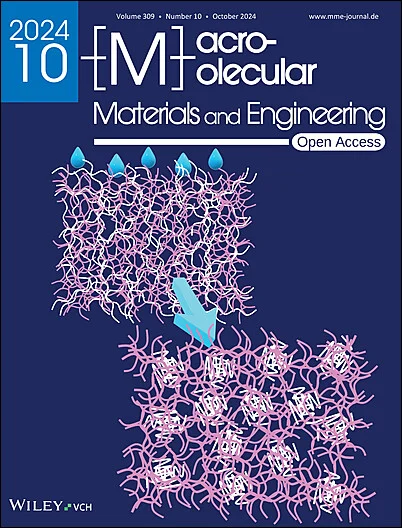4D Bioprinting: Keeping the Technology Alive
IF 4.2
3区 材料科学
Q2 MATERIALS SCIENCE, MULTIDISCIPLINARY
引用次数: 0
Abstract
4D bioprinting is a groundbreaking technology with potential to revolutionize healthcare. It is based on additive manufacturing technologies, which are used to fabricate dynamic prosthetics and devices from biologically compatible smart materials that respond to stimuli. The ultimate end of 4D bioprinting is the creation of an artificial organ that perfectly mimics the functional movements of a native organ and is fully integrated within the human body. In this perspective, two phases are identified toward this end. The first is minimally invasive surgery (MIS) using shape memory composites stimulated by near-infrared (NIR) light and/or magnetic fields. The second is dynamic tissue engineering (DTE) with activation by biological stimuli.
4D生物打印:保持技术活力
4D生物打印是一项具有革命性医疗保健潜力的突破性技术。它基于增材制造技术,用于用生物兼容的智能材料制造动态假肢和设备,这些材料可以对刺激做出反应。4D生物打印的最终目的是创造一个人造器官,完美地模仿天然器官的功能运动,并完全融入人体。从这个角度来看,可以确定实现这一目标的两个阶段。第一种是微创手术(MIS),使用近红外(NIR)光和/或磁场刺激的形状记忆复合材料。第二种是生物刺激激活的动态组织工程(DTE)。
本文章由计算机程序翻译,如有差异,请以英文原文为准。
求助全文
约1分钟内获得全文
求助全文
来源期刊

Macromolecular Materials and Engineering
工程技术-材料科学:综合
CiteScore
7.30
自引率
5.10%
发文量
328
审稿时长
1.6 months
期刊介绍:
Macromolecular Materials and Engineering is the high-quality polymer science journal dedicated to the design, modification, characterization, processing and application of advanced polymeric materials, including membranes, sensors, sustainability, composites, fibers, foams, 3D printing, actuators as well as energy and electronic applications.
Macromolecular Materials and Engineering is among the top journals publishing original research in polymer science.
The journal presents strictly peer-reviewed Research Articles, Reviews, Perspectives and Comments.
ISSN: 1438-7492 (print). 1439-2054 (online).
Readership:Polymer scientists, chemists, physicists, materials scientists, engineers
Abstracting and Indexing Information:
CAS: Chemical Abstracts Service (ACS)
CCR Database (Clarivate Analytics)
Chemical Abstracts Service/SciFinder (ACS)
Chemistry Server Reaction Center (Clarivate Analytics)
ChemWeb (ChemIndustry.com)
Chimica Database (Elsevier)
COMPENDEX (Elsevier)
Current Contents: Physical, Chemical & Earth Sciences (Clarivate Analytics)
Directory of Open Access Journals (DOAJ)
INSPEC (IET)
Journal Citation Reports/Science Edition (Clarivate Analytics)
Materials Science & Engineering Database (ProQuest)
PASCAL Database (INIST/CNRS)
Polymer Library (iSmithers RAPRA)
Reaction Citation Index (Clarivate Analytics)
Science Citation Index (Clarivate Analytics)
Science Citation Index Expanded (Clarivate Analytics)
SciTech Premium Collection (ProQuest)
SCOPUS (Elsevier)
Technology Collection (ProQuest)
Web of Science (Clarivate Analytics)
 求助内容:
求助内容: 应助结果提醒方式:
应助结果提醒方式:


